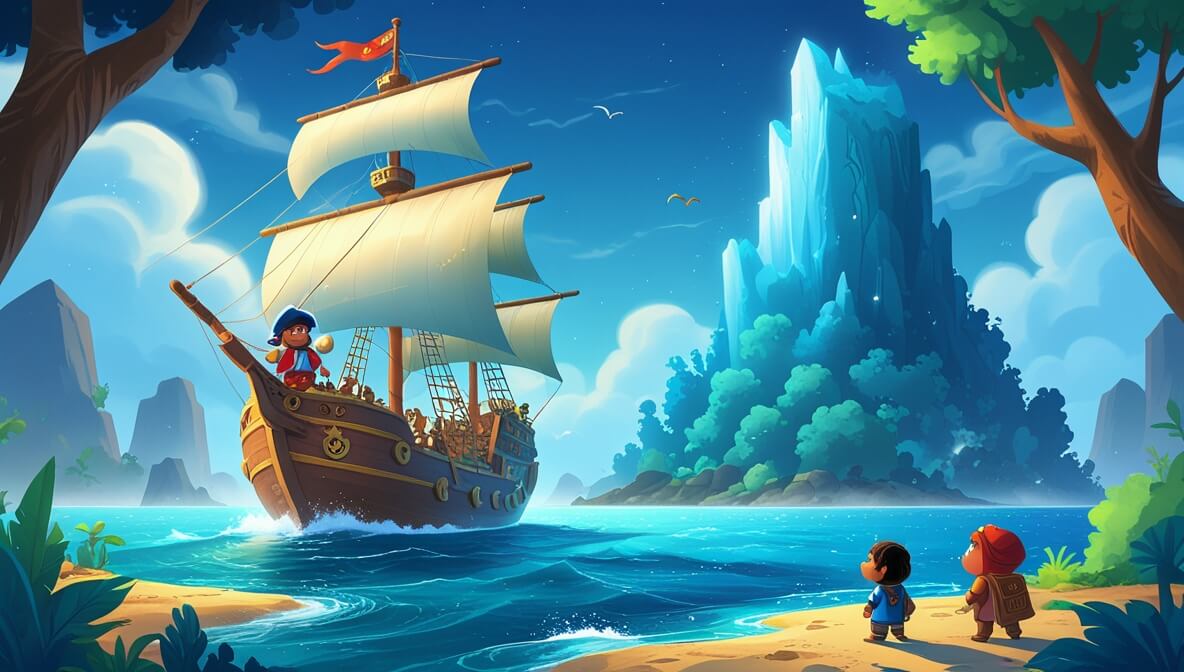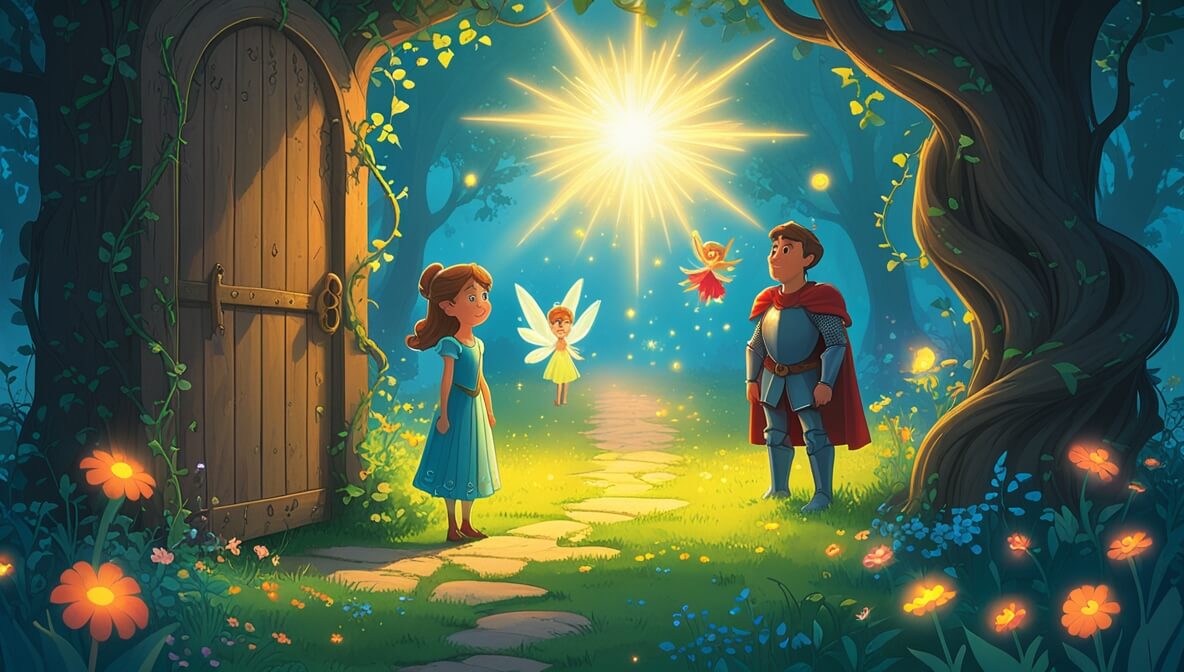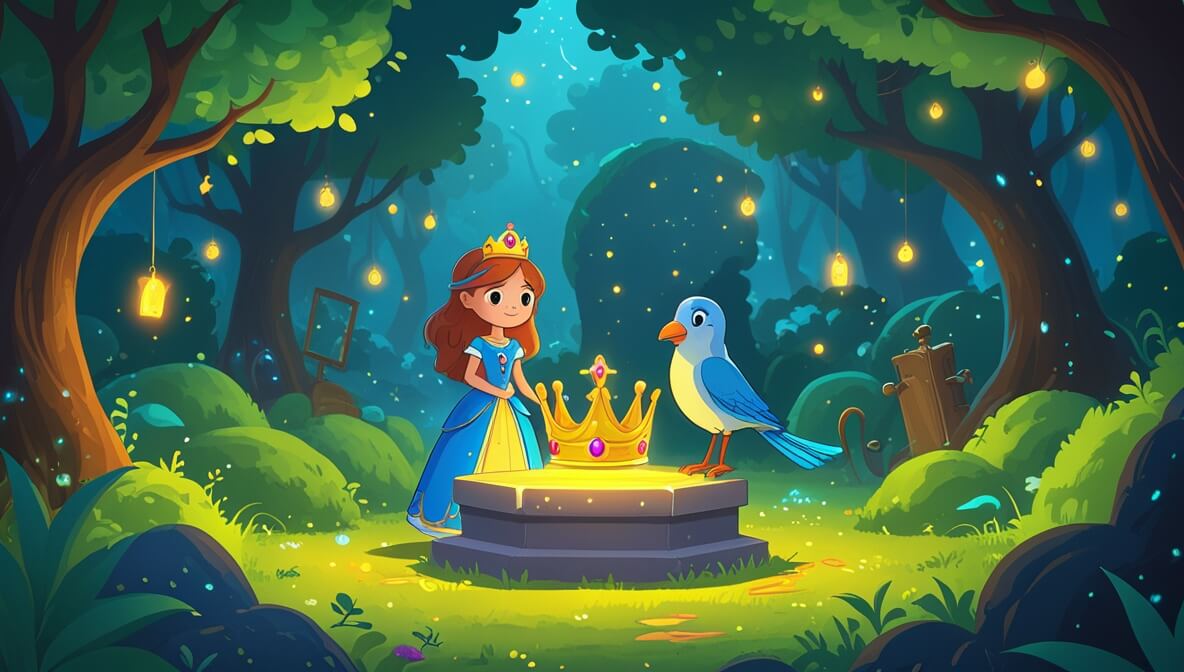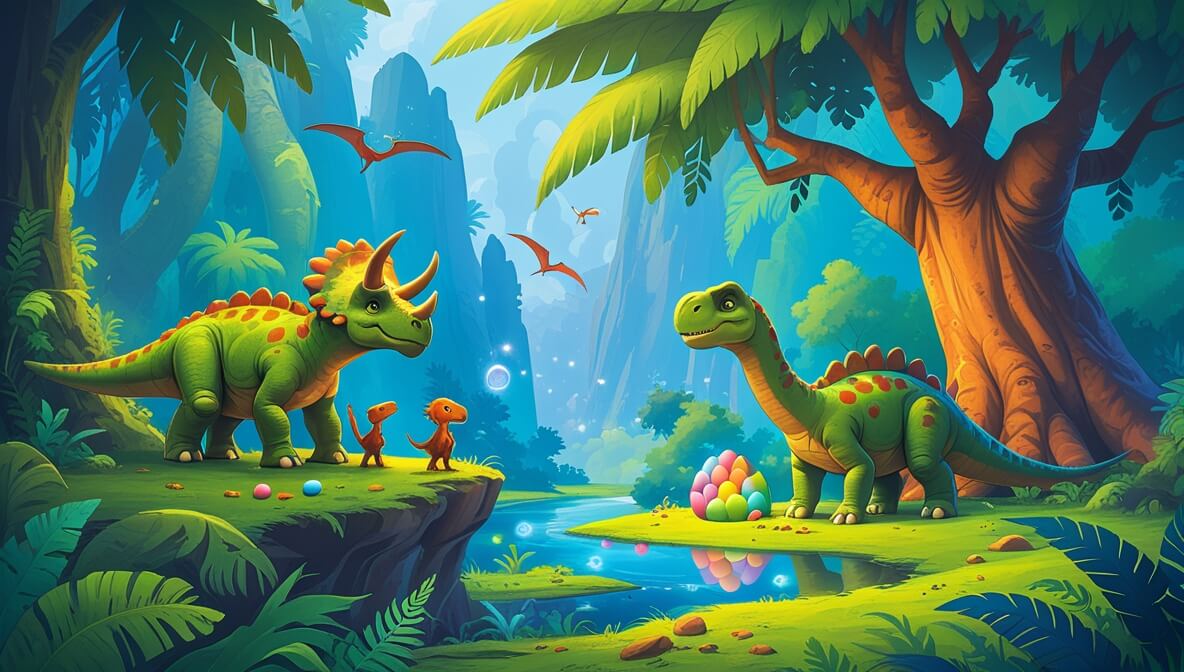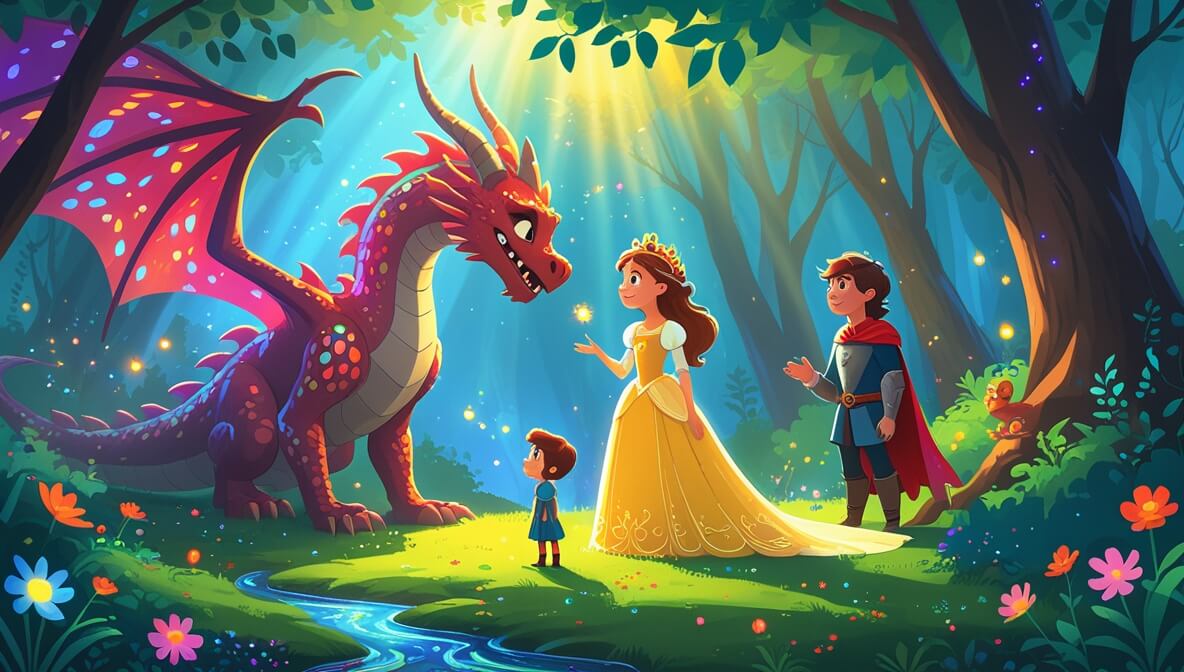A daring crew sets sail to find a legendary treasure hidden within a mysterious island’s secret cave. Along the way, they face stormy seas, ancient legends, and the need for bravery.
Age Recommendation
3 – 12 years
Characters
Characters:
- Captain Zephyr: A brave and wise leader of the ship.
- Finn the Fearless: A daring sailor with a knack for adventure.
- Luna the Lookout: A sharp-eyed scout who spots dangers from afar.
- Marina the Mapmaker: The clever navigator who holds the secret map.
Story
The Call of the Sea
Once upon a time, on a bright sunny morning, the ship Sea Serpent set sail from the bustling port of Coral Cove. Captain Zephyr stood proudly at the helm, his eyes scanning the horizon for any sign of adventure. Beside him stood Finn the Fearless, who was already dreaming of the treasures that lay ahead. “Today, we’ll find the legendary treasure of the Isle of Echoes,” Captain Zephyr declared with a confident smile.
Navigating the Storm
As the ship sailed further into the vast ocean, dark clouds began to gather. Luna the Lookout climbed to the top of the mast, her keen eyes spotting the distant storm. “Captain, a storm is brewing!” she shouted. The crew braced themselves as the wind howled and the waves crashed against the hull. Marina the Mapmaker quickly unrolled the ancient map, tracing the path to the hidden lagoon. “We must stay on course, even in this storm,” she urged.
The Mysterious Island
After battling the stormy weather, the Sea Serpent finally reached the Isle of Echoes. The island was shrouded in mist, and seagulls circled above, cawing loudly. “The map says the treasure is hidden in a cave,” Marina explained. The crew cautiously made their way through the dense jungle, guided by the map’s markings.
The Secret Cave
At last, they found the entrance to the mysterious cave, its mouth dark and foreboding. “This is it,” Finn said, excitement in his voice. Holding a lantern high, Captain Zephyr led the way inside. The cave was filled with echoes of their footsteps, and the air was cool and damp. Suddenly, a golden glimmer caught their eye—a treasure chest filled with gold and jewels!
The Return Home
With their hearts full of joy and their ship loaded with treasure, the crew of the Sea Serpent set sail for home. “We did it, crew!” Captain Zephyr cheered. “We found the legendary treasure!” The crew celebrated their triumph, knowing that their teamwork and courage had led them to success. As the ship sailed back into Coral Cove, the setting sun painted the sky with hues of orange and pink, marking the end of their grand adventure.
The end.
Moral of the Story
The story teaches the importance of bravery, teamwork, and persistence. Even when faced with challenges like storms or mysterious caves, the crew worked together and stayed courageous, ultimately achieving their goal.
Questions to Think About
- Why was Captain Zephyr’s leadership important for the adventure?
- How did the crew use teamwork to overcome the storm?
- What might have happened if Marina didn’t have the map?
- Why is it important to face fears like the dark cave?
- What do you think the crew will do with their treasure?
Do You Know
- The word “pirate” comes from the Greek word “peirates,” which means “one who attacks or plunders.”
- Many pirate flags, known as “Jolly Rogers,” featured skulls and crossbones to scare other ships.
Word Explorer
- Navigator: Someone who plans and directs the course of a ship.
- Lagoon: A shallow body of water separated from the ocean by sandbars or reefs.
- Foreboding: A feeling that something bad is going to happen.
Emotions in the Story
- Excitement: When the crew set sail for the adventure and found the treasure.
- Fear: When the storm hit, and they had to navigate through rough seas.
- Joy: When they discovered the treasure and sailed back home.
Color Your Scene
Imagine the moment when the crew discovers the hidden treasure in the cave. Picture the golden glow of the jewels and coins shining in the dark cave. Draw the crew’s expressions of joy and surprise, surrounded by the rocky walls of the cave. Use bright yellows and golds for the treasure, and deep blues for the shadows in the cave.
Parents’ Corner
This story offers an opportunity to discuss several important values with your child:
Bravery: Talk about how each character faced their fears, like the storm and dark cave, and how bravery can help us overcome challenges in life.
Teamwork: Discuss how working together helped the crew reach their goal and how teamwork can be applied to school projects or household tasks.
Persistence: Encourage your child to remember that even when things get tough, like during the storm, it’s important to keep trying and not give up on their goals.
Problem-solving: Reflect on how the crew used the map and their skills to find the treasure and how they can solve problems in their daily life.

